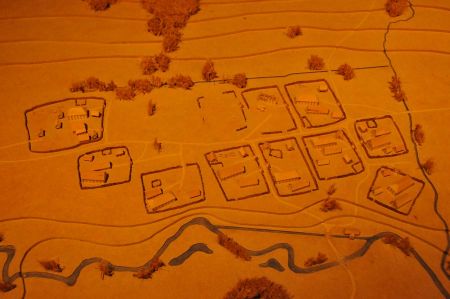The Alemanni Museum in Ellwangen
- Written by Portal Editor
On Saturday we arrived in Ellwangen around 1 p.m. Thanks to the excellent satellite navigation, it was easy to find the large, public car park in the city center on the B 290, from which it is just a few meters to the Alamannen Museum at Haller Straße 9, enough time for a short tour of the city to insert.
A new museum on the early settlement history of the Alamanni was opened in the building of the medieval Nikolauspflege after the unique finds from the excavations in Lauchheim upstream from Jagst. Archaeological finds from all over southern Germany have been on display in the Alamannen Museum in Ellwangen since September 2001, providing a historical overview of five centuries of Alamannic culture, beginning with the 3rd century AD.
Woodcraft of the Alamanni
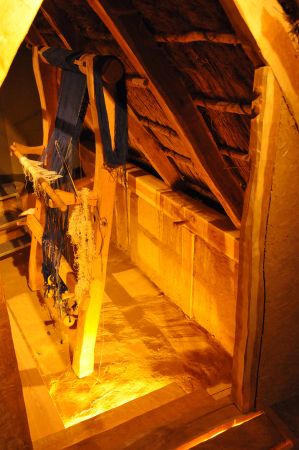 By chance, in 1986, during construction work, the largest Alamannic cemetery found to date and the associated Alamannic settlement with a manor and richly furnished court grave goods were found, which was then excavated over the next 10 years under the direction of the Baden-Württemberg State Office for the Preservation of Monuments. A large part of the finds could be scientifically evaluated in the following years, although the work has not yet been completed. Just in the Alamanni Museum in Ellwangen are finds about the Alamanni presented and documented in such detail that this museum becomes something unique. In addition to the pure exhibition, chronological sequences and events are described in such detail that the visitor can put himself back into the life and work of the Alamanni. Main topics are:
By chance, in 1986, during construction work, the largest Alamannic cemetery found to date and the associated Alamannic settlement with a manor and richly furnished court grave goods were found, which was then excavated over the next 10 years under the direction of the Baden-Württemberg State Office for the Preservation of Monuments. A large part of the finds could be scientifically evaluated in the following years, although the work has not yet been completed. Just in the Alamanni Museum in Ellwangen are finds about the Alamanni presented and documented in such detail that this museum becomes something unique. In addition to the pure exhibition, chronological sequences and events are described in such detail that the visitor can put himself back into the life and work of the Alamanni. Main topics are:
- Weaving and textile crafts of the Alamanni
- Woodcraft of the Alamanni
- Alamannic gold and silversmith work
- The Alamanni as the first Christians in southern Germany
Roman Carnuntum and a boat trip on Lake Neusiedl
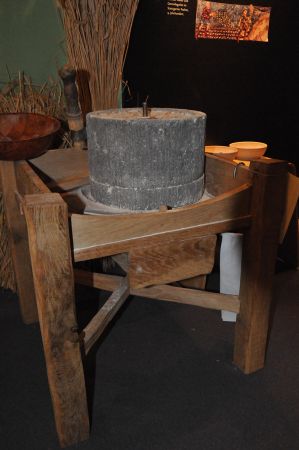 With our arrival at the museum, we also met the preparations for an information meeting on the planned cultural educational trip "The Roman Sites on the Danube Limes", which should lead via Vienna and on the Danube to the Roman settlement at the "Heidentor" of Carnuntum. In the café of the museum, people were busy preparing for the introductory event over coffee and cake, which took place from 29.8. - September 2nd, 2012 with headquarters in Vienna. Under the direction of the architect Werner Wittmann, who was involved in various excavations and also organized the museum trips in 2007 and 2010, further archaeological, architectural and art-historical gems are to be visited and explained. This year's highlight of the cultural trip should be the Roman Carnuntum and a boat trip on Lake Neusiedl, which will end with a colorful finale in Vienna.
With our arrival at the museum, we also met the preparations for an information meeting on the planned cultural educational trip "The Roman Sites on the Danube Limes", which should lead via Vienna and on the Danube to the Roman settlement at the "Heidentor" of Carnuntum. In the café of the museum, people were busy preparing for the introductory event over coffee and cake, which took place from 29.8. - September 2nd, 2012 with headquarters in Vienna. Under the direction of the architect Werner Wittmann, who was involved in various excavations and also organized the museum trips in 2007 and 2010, further archaeological, architectural and art-historical gems are to be visited and explained. This year's highlight of the cultural trip should be the Roman Carnuntum and a boat trip on Lake Neusiedl, which will end with a colorful finale in Vienna.
Similar tours are also planned for the coming years. If you are interested, please contact the museum management in Ellwangen.
Exhibitions of original archaeological finds
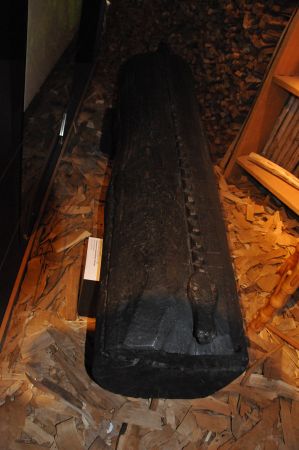 At around 2:30 p.m. we met the head of the museum, Mr. Andreas Gut, in the Alamannen Museum, who took the time to give us a short tour with the appropriate explanations. Already in the entrance situation we came across the first enactment of an Alamannic life situation, because the hut structure in the form of a pit hut with a loom as a workplace was documented in its original size. Exhibitions of original archaeological finds and interactive media took place at loose intervals, which vividly presented the life and work of the Alamanni with the help of screens and moving images. Text and display boards of the historical side scenes, here above all the juxtaposition of the different ethnic groups, completed the picture.
At around 2:30 p.m. we met the head of the museum, Mr. Andreas Gut, in the Alamannen Museum, who took the time to give us a short tour with the appropriate explanations. Already in the entrance situation we came across the first enactment of an Alamannic life situation, because the hut structure in the form of a pit hut with a loom as a workplace was documented in its original size. Exhibitions of original archaeological finds and interactive media took place at loose intervals, which vividly presented the life and work of the Alamanni with the help of screens and moving images. Text and display boards of the historical side scenes, here above all the juxtaposition of the different ethnic groups, completed the picture.
Beginning with the reconstructed pit house from Lauchheim, the museum tour designed by the archaeologist Andreas Gut offers a clear overview of the Alamanni period, starting with the early days on the ground floor, the time of the migration of peoples up to the time of the Merovingians, when Alamania became a Frankish duchy.
Reconstructed granary from Lauchheim
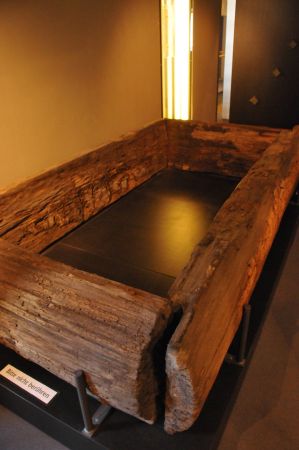 With particular pride, Mr. Andreas Gut also showed us the gold leaf crosses made of thin gold foil, which are probably the first Christian symbols in southern Germany. Mr. Andreas Gut also pointed out the tree coffins that had been found, the so-called dead trees, because some of them were decorated with double-headed snakes at the ends. A very well-preserved grave border made of solid oak was another highlight during the tour.
With particular pride, Mr. Andreas Gut also showed us the gold leaf crosses made of thin gold foil, which are probably the first Christian symbols in southern Germany. Mr. Andreas Gut also pointed out the tree coffins that had been found, the so-called dead trees, because some of them were decorated with double-headed snakes at the ends. A very well-preserved grave border made of solid oak was another highlight during the tour.
The museum also includes the museum garden and the medieval St. Nicholas chapel behind it, which is well integrated into the overall concept with its vegetable garden from the Alamanni period and the reconstructed granary from Lauchheim. A really successful concept to get a clear overview of the Alamanni. A visit is absolutely worthwhile, especially since the museum can be reached quickly from the Würzburg – Trier motorway, and is always worth a stopover.
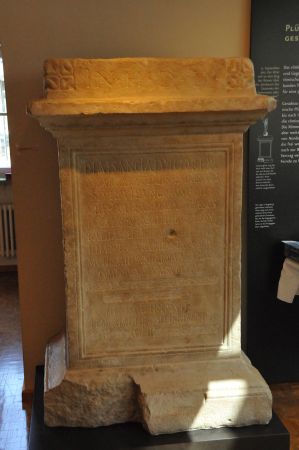 We said goodbye to Mr. Andreas Gut and hope to keep in touch, especially with regard to our project "Cultural Journey along Roman Roads", as there are many other highlights in the area. We had arranged to meet Norbert and Lothar later, so that this evening was spent in Ellwangen. We spent a nice evening together in the garden of the architecturally really successful house, which also included planning for the coming Sunday with regard to further visits to attractive destinations.
We said goodbye to Mr. Andreas Gut and hope to keep in touch, especially with regard to our project "Cultural Journey along Roman Roads", as there are many other highlights in the area. We had arranged to meet Norbert and Lothar later, so that this evening was spent in Ellwangen. We spent a nice evening together in the garden of the architecturally really successful house, which also included planning for the coming Sunday with regard to further visits to attractive destinations.
Please read as well:
